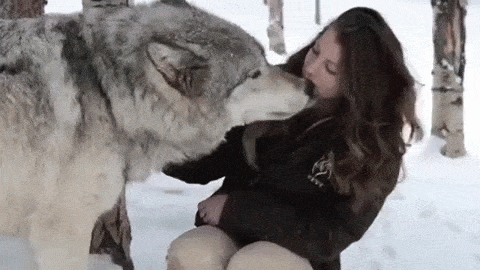Wolves are Big, Werewolves are Bigger
So there is this common misconception that “wolves are the size of dogs, like a husky.”
That is extremely untrue. Wolves are big. It varies by species, but regardless, the ones you usually are thinking of from a pop culture standpoint are much bigger than you think. People like to say “take your concept of a wolf’s size and double it, and maybe you have something close.” That’s pretty true – except it probably still isn’t big enough.

Remember those stories about wolves swallowing people whole? There are precedents for that. Don’t worry, though, they won’t actually do it. But a wolf can easily fit a grown adult’s head in its mouth. They can fit the rest of you, too, technically speaking. Again, where “wolfing down your food” comes from.
The size of wolves varies by species, as you might imagine, but there is this common misconception that they are “small” predators, especially in video games. That’s patently ridiculous. Of course, many aspects of wolves in video games are ridiculous, like all the barking and the fact that they always brainlessly attack you, but anyway–
Many photos that exhibit the great size of wolves are hunting photos, however, and I outright refuse to post anything like that on this blog, so if you’re that morbidly curious, you can search for those yourself. Here, we have nice wolf pictures.
The “average” wolf stands around 2.8 to 3 feet at the shoulder and 6+ feet long. They are the largest canids.
However, it’s very important to bear in mind how much this varies by species. Some wolves are bigger, like Mackenzie Valley wolves, and some are smaller. Arctic wolves, for instance, along with Italian wolves and especially Arabian wolves, range in smaller sizes. And, of course, like people, some individuals are smaller and some are bigger.
But what people will think of as the “average” wolf – like a Northern Rocky Mountain wolf – is positively enormous.

Some of the largest wolves recorded are over 7 feet long and range more around 4 feet at the shoulder. Take that, turn it into a human-shaped muscular mythic werewolf standing on its hind legs, and you get something much, much bigger.
To put it simply, wolves are bigger than the overwhelming majority of grown men. They are certainly much bigger than your dog. Much, much bigger. (Fun fact: their brains are also over 3x bigger than domestic dogs)
Supposedly, hunters have killed wolves even bigger than these various approximations and generalizations, killing wolves of even greater heights and lengths (and weighing over 600 lbs). Some wolves like these have, in fact, been recorded, but they are very unusual and also plenty of them could very much be big fish stories because, you know, hunters. Again, though, a reminder to bear in mind that genetics let the sizes of animals vary wildly, puns intended, so all of these are generalizations.



And now, what about folklore werewolves?
Werewolves in folklore are frequently described as even bigger – vastly so – than ordinary wolves. This isn’t always the case – size isn’t always specified – but frequently, werewolves are said to be the size of large horses or even bigger, or a nonspecific variation of “enormous,” “huge,” etc.
For instance, in Arthur and Gorlagon, the werewolf is described thusly: “this enormous wolf (for they had never seen any of so vast a size)”
So, for werewolves? Take wolves, which are already huge, and make that even bigger!

So now you know! Never underestimate the size of a wolf again – and remember, wolves are just like people. Some are smaller, some are larger, and it varies by individual. It’s all about genetics. But on average? Wolves are much, much bigger than you think!